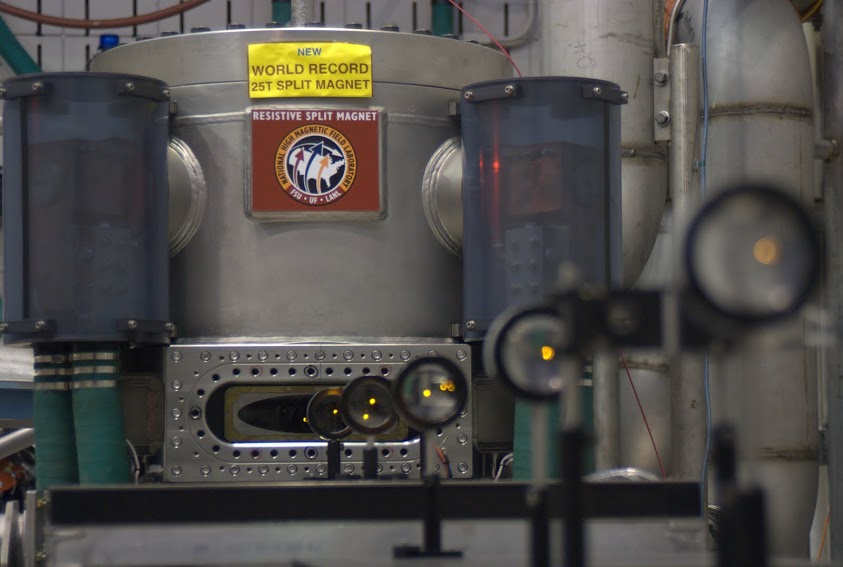
The
search for organic ele ctronics as alternatives to traditional
silicon-based technologies has advanced tremendously over the
past two decades. While some of the greatest achievements in
this field already available to consumers (i. e. OLEDs)
remarkable recent advances in the area of small-molecules
organic thin films captured the attention of a significantly
broader researcher base with interests ranging from organic
thin film transistors to magnetic devices and even fast light
detection. The Furis group focuses on understanding how many body, long-range interactions in the crystalline phase lead to emergent phenomena such as coherent excitonic states and even magnetic ordering in organic semiconductors.The group's experimental work
investigates correlations between the electronic and magnetic
properties of crystalline films of small dye molecules to
molecular ordering using polarized light spectroscopy imaging.
ctronics as alternatives to traditional
silicon-based technologies has advanced tremendously over the
past two decades. While some of the greatest achievements in
this field already available to consumers (i. e. OLEDs)
remarkable recent advances in the area of small-molecules
organic thin films captured the attention of a significantly
broader researcher base with interests ranging from organic
thin film transistors to magnetic devices and even fast light
detection. The Furis group focuses on understanding how many body, long-range interactions in the crystalline phase lead to emergent phenomena such as coherent excitonic states and even magnetic ordering in organic semiconductors.The group's experimental work
investigates correlations between the electronic and magnetic
properties of crystalline films of small dye molecules to
molecular ordering using polarized light spectroscopy imaging.
The
team pioneered free-space magneto-optical measurements in
the new Florida Helix 25T magnet located at th e National High
Magnetic Field Laboratory.
The unique, revolutionary split-coil design provides the
free-space optical access required for probing materials using
spectroscopy techniques, the
use of which had been
severely limited at high -magnetic
fields by limitations imposed by optical fibers.
e National High
Magnetic Field Laboratory.
The unique, revolutionary split-coil design provides the
free-space optical access required for probing materials using
spectroscopy techniques, the
use of which had been
severely limited at high -magnetic
fields by limitations imposed by optical fibers.
Furis was co-PI on a $1.5 million dollar grant from the National Science Foundation that funds the development of state-of-the-art free-space optical spectroscopy experiments that will have a transformative impact in areas that include: a) probing the limits of quantum coherence in complex materials through THz measurements of dephasing times, b) exploring quantum mechanical correlations in chemical changes c) Imaging excitons and spins in a great variety of electronic materials including organic systems and d) understanding interactions and changes in oxidation states in organic complexes, including bioproteins.
This setup will be further expandable by a growing base of collaborators who can build additional probes or experiments to be paired with this spectroscopy system. Using this tool for research at magnetic fields > 10 T will enable researchers to gain insight on fundamental physics that govern the behavior of materials with strong electron correlations as well as exhibit macroscopically observable quantum effects that cannot be accessed at zero or low magnetic fields.
